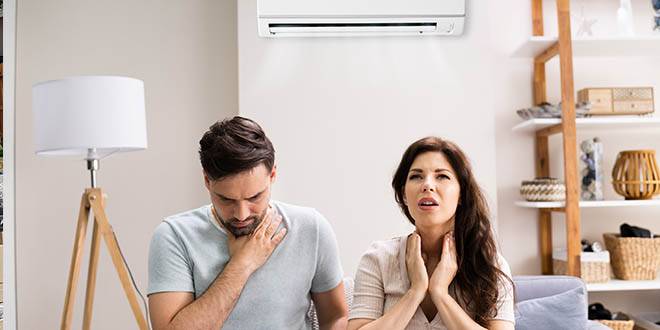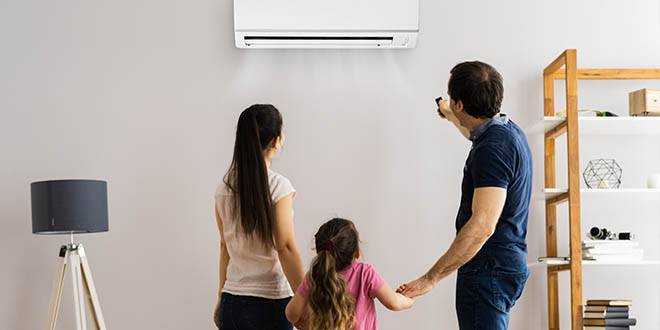In Vacaville, CA, where the sun kisses our days and the gentle breeze caresses our evenings, the purity of the air inside our homes is as crucial as the beauty outside. But how can we be sure that the air we breathe indoors is truly clean? “Fresh Air 101” is your ultimate guide to understanding how to test air quality in your home, ensuring a safe haven for you and your loved ones.
Understanding Indoor Air Quality
What is Indoor Air Quality?
Indoor Air Quality (IAQ) refers to the air quality within and around buildings and structures, especially as it relates to the health and comfort of building occupants. Understanding and controlling common pollutants indoors can help reduce the risk of indoor health concerns. IAQ is a significant concern because individuals spend approximately 90% of their time indoors, where concentrations of some pollutants are often 2 to 5 times higher than typical outdoor concentrations.
In homes across Vacaville, CA, and indeed any home, several sources contribute to indoor air pollution. Common pollutants include:
Dust and Allergens: Accumulating from both outdoor sources and indoor activities, dust can carry pet dander, pollen, and dust mites, aggravating allergies and respiratory conditions.
Mold: Thriving in damp areas, mold releases spores that can worsen or trigger allergies, asthma, and other respiratory issues. In areas like Vacaville, where the climate can support mold growth in poorly ventilated spaces, this is particularly concerning.
Volatile Organic Compounds (VOCs): Emitted as gasses from certain solids or liquids, VOCs are found in many household products, from paints and lacquers to cleaning supplies and pesticides. Exposure can lead to a range of health effects, from eye and respiratory tract irritation to more severe effects like damage to the liver, kidney, or central nervous system.
Carbon Monoxide (CO): An odorless, colorless gas that can be deadly at high levels, CO is produced by burning fuel in cars, trucks, small engines, stoves, lanterns, grills, fireplaces, gas ranges, or furnaces. Proper ventilation and maintenance of appliances are crucial to prevent dangerous levels indoors.

Signs of Poor Indoor Air Quality
Recognizing the signs of poor IAQ can be the first step in addressing and mitigating its impact on your health. Symptoms of exposure to indoor pollutants include:
Increased Allergy Symptoms: Frequent sneezing, coughing, itchy eyes, or a runny nose can be exacerbated by poor air quality, especially in those with pre-existing allergies.
Respiratory Issues: Difficulty breathing, wheezing, or an increase in asthma attacks can be triggered by pollutants like mold spores, dust, pet dander, and particulate matter.
Unexplained Fatigue: Consistent feelings of tiredness or lethargy that seem to improve when outside the home may be linked to exposure to indoor pollutants.
Headaches and Dizziness: Short-term exposure to certain chemicals and gasses, including high levels of CO and VOCs, can lead to headaches, dizziness, or nausea.
Skin Irritations: Dry or itchy skin, rashes, and other skin irritations can also be a response to various indoor pollutants, particularly in sensitive individuals.
If you or your family members are experiencing these symptoms without a clear cause, it might be time to assess the air quality in your home. Identifying and mitigating the sources of indoor pollution can lead to significant improvements in both health and overall well-being.

How to Test the Air Quality in Your Home
Ensuring the air within your home is clean and safe is paramount for your health and well-being. Here’s how you can assess the air quality inside your space, ranging from basic visual inspections to professional evaluations.
Visual Inspections and Home Monitoring
Visual Inspections:
Mold Growth: Inspect areas prone to moisture, such as bathrooms, kitchens, and basements, for visible signs of mold or mildew. Mold often appears as dark spots or patches and can indicate high humidity or water leakage problems.
Dust Buildup: Regularly check for excessive dust accumulation, especially around vents, under furniture, and in less frequented corners. High dust levels can exacerbate allergies and respiratory issues.
Potential Pollutant Sources: Identify potential sources of indoor air pollutants, such as gas appliances, tobacco smoke, or areas where chemicals are stored (like garages or storage rooms). Ensuring these areas are well-ventilated can help minimize their impact on your home’s air quality.
Home Monitoring:
Carbon Monoxide Detectors: These should be installed on every level of your home, especially near sleeping areas. Carbon monoxide is odorless and colorless, making detectors essential for early warning of potentially dangerous levels.
Radon Test Kits: Radon is a naturally occurring radioactive gas that can enter homes through the ground. It is a leading cause of lung cancer among non-smokers. Radon test kits can be used to detect its presence and determine if mitigation actions are needed.
DIY Testing Kits
For a more thorough assessment, various DIY air quality testing kits are available to homeowners:
How They Work: These kits typically include collection devices or sensors that you place in various locations around your home for a specified period. After exposure, some kits require you to send them to a lab for analysis, while others provide immediate readings.
What They Test For: Common DIY tests can detect mold, VOCs, radon, and other pollutants. Specific kits are designed to test for particular substances, so it’s important to choose the right one based on your concerns.
Effective Usage: Follow the instructions carefully for each test kit. Placement is crucial for accurate readings, as is the duration of exposure. For best results, test multiple areas of your home and at different times to get a comprehensive view of your air quality.
Professional Air Quality Assessment
While DIY methods can provide valuable insights, certain situations call for a professional assessment:
When to Call Professionals:
If your DIY tests indicate high levels of harmful pollutants.
When experiencing unexplained health symptoms consistent with poor air quality.
Before purchasing a new home or after completing significant renovations.
What to Expect:
Initial Consultation: A professional will discuss your specific concerns and symptoms, any known issues with the home, and any results from DIY tests you’ve conducted.
Inspection and Testing: Using advanced equipment, professionals can conduct a thorough assessment of your home’s air. Tools may include particle counters for measuring particulate matter, sophisticated sensors for detecting gasses like CO and radon, and hygrometers for humidity levels.
Comprehensive Report: After the assessment, you’ll receive a report detailing the findings, including the types and concentrations of pollutants found. This report will also offer recommendations for mitigating any issues, which could range from improving ventilation to installing air purification systems.
A professional air quality assessment provides a detailed analysis of the air in your home, identifying potential health hazards and offering solutions to address them. This proactive approach ensures that your living environment supports your health and the well-being of your family.
Improving Your Home’s Air Quality
Creating a healthier indoor environment requires both immediate actions and long-term strategies. Here’s how you can start improving the air quality in your home today and sustain these benefits over time.

Immediate Steps for Cleaner Air
Increase Ventilation:
Open Windows: Whenever weather permits, open windows to allow fresh air to circulate, diluting and displacing indoor pollutants.
Use Exhaust Fans: Especially in the kitchen and bathrooms, exhaust fans can help remove pollutants directly from these areas and prevent their spread throughout the home.
Use Air Purifiers:
Portable Air Purifiers: Ideal for targeting specific rooms or areas in your home, look for air purifiers with HEPA filters capable of capturing fine particulates, including pollen, pet dander, and dust mites.
Consider Filter Ratings: Choose air purifiers and filters with a high Clean Air Delivery Rate (CADR) for better effectiveness in removing air pollutants.
Adopt Houseplants:
Natural Air Purifiers: Certain plants, like spider plants, snake plants, and peace lilies, can help remove pollutants from the air through the process of photosynthesis and microbial activity in the soil.
Placement: Strategically place houseplants throughout your home, but be mindful of overwatering, as excessive moisture can promote mold growth.
Long-Term Solutions
HVAC Upgrades:
HEPA Filters for HVAC Systems: Upgrading to HEPA filters in your HVAC system can significantly improve its ability to remove airborne particulates. Ensure your system can accommodate these filters without restricting airflow.
Regular Maintenance: Schedule annual maintenance checks to ensure your HVAC system is running efficiently and not contributing to indoor air pollution.
Duct Cleaning:
Professional Cleaning: Over time, ducts can accumulate dust, allergens, and even mold. Having your ducts professionally cleaned can improve air circulation and quality.
Sealing Leaks: Leaky ducts not only waste energy but can also introduce pollutants from unconditioned spaces into your home. Sealing and insulating ducts can prevent these issues.
Whole-Home Air Filtration Systems:
Integrated Solutions: Consider installing a whole-home air filtration system that works with your HVAC system to continuously filter out pollutants from the air circulated throughout your home.
Customizable Filtration: These systems can be customized with filters to target specific concerns, such as allergens, VOCs, or bacteria and viruses, providing a comprehensive solution to indoor air quality issues.
Monitor Humidity Levels:
Dehumidifiers: In areas with high humidity, use dehumidifiers to keep humidity levels in check (ideally between 30-50%) to prevent mold growth and dust mites.
By implementing these immediate and long-term strategies, you can significantly improve the air quality in your home, making it a healthier environment for you and your family. Whether it’s opting for simple fixes like opening windows and using air purifiers or investing in more significant upgrades like HVAC enhancements and whole-home filtration systems, each step contributes to cleaner, fresher air indoors.
Breathe Easy with All Weather Heating & Air Conditioning
Is the air in your home as fresh as Vacaville’s spring breeze? 🌬🏠 All Weather Heating & Air Conditioning is here to ensure you’re breathing easy with professional air quality testing and solutions tailored to your home. Don’t leave your air to chance. Contact us today, and take a deep breath of peace of mind knowing your air is clean and your family is safe. We also offer air conditioning installation, repair, and maintenance. 💙🍃

